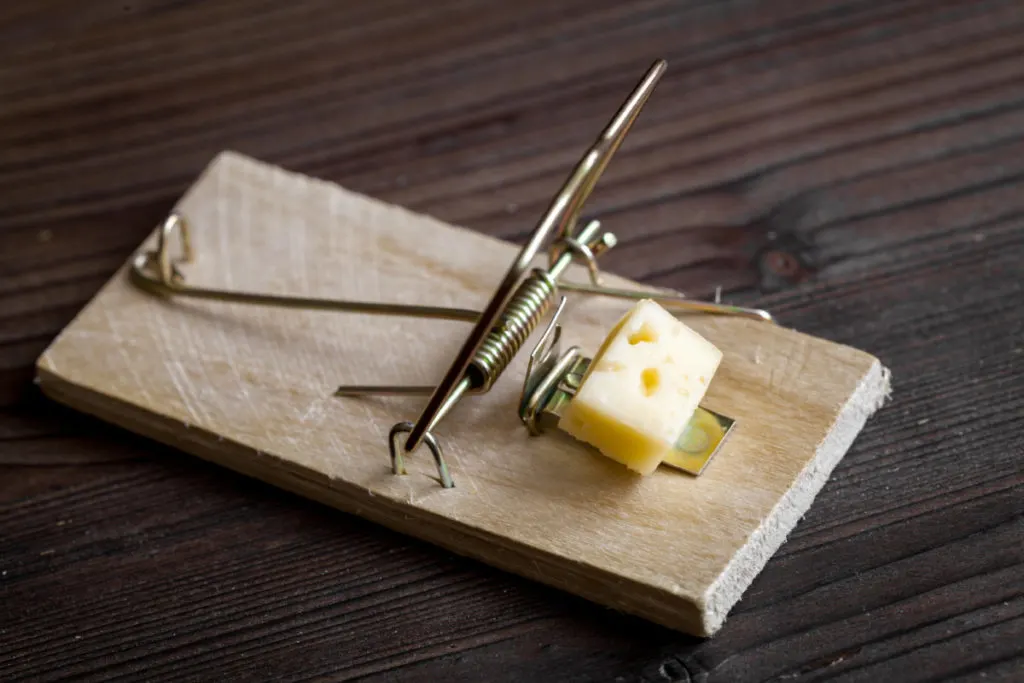
No one enjoys unexpected houseguests, especially those of the rodent variety.
Chilly winter weather makes your home extra inviting for mice escaping the cold, making it a typical time for an infestation. Fail to address the problem right away, and you could find your space overrun with pests in short order.
Act now, and you’ll be able to tackle the problem before it gets out of hand. Here’s what you need to keep mice out of your home.
Mice and Your Home – The Perfect Combination
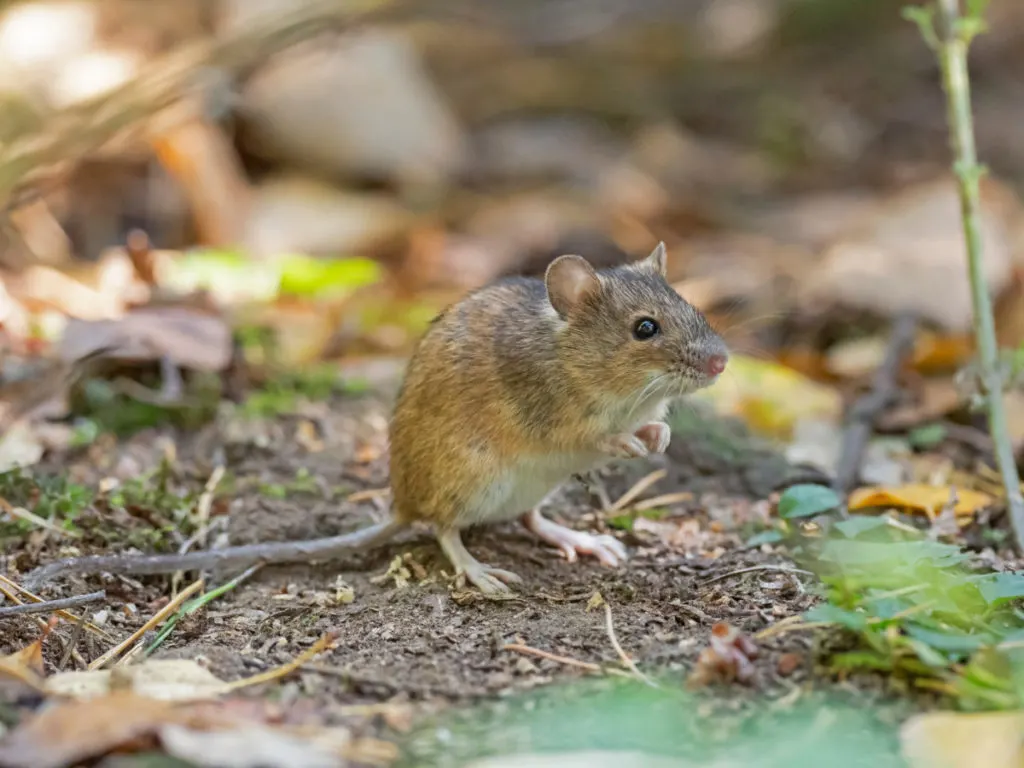
As the most common mammal in the world, house mice are native to Central Asia and thrive in cozy indoor environments. Most weigh under an ounce and only live between 9-18 months. But even so, house mice are prolific breeders that can produce new litters every 25 days, meaning a single pair can result in over 5,000 offspring within a year.
A mouse infestation is more than icky—the animals can cause serious damage to both your home and your health. According to the CDC, mice carry more than 35 human-transferable diseases and can worsen allergies and asthma in those who come in close contact.
These tiny rodents can quickly cause problems in your home by gnawing on wires, plastics and rubber materials. Their pee-soaked nests will also quickly ruin any clothing or bedding material it comes in contact with.
Signs of a Mouse Infestation
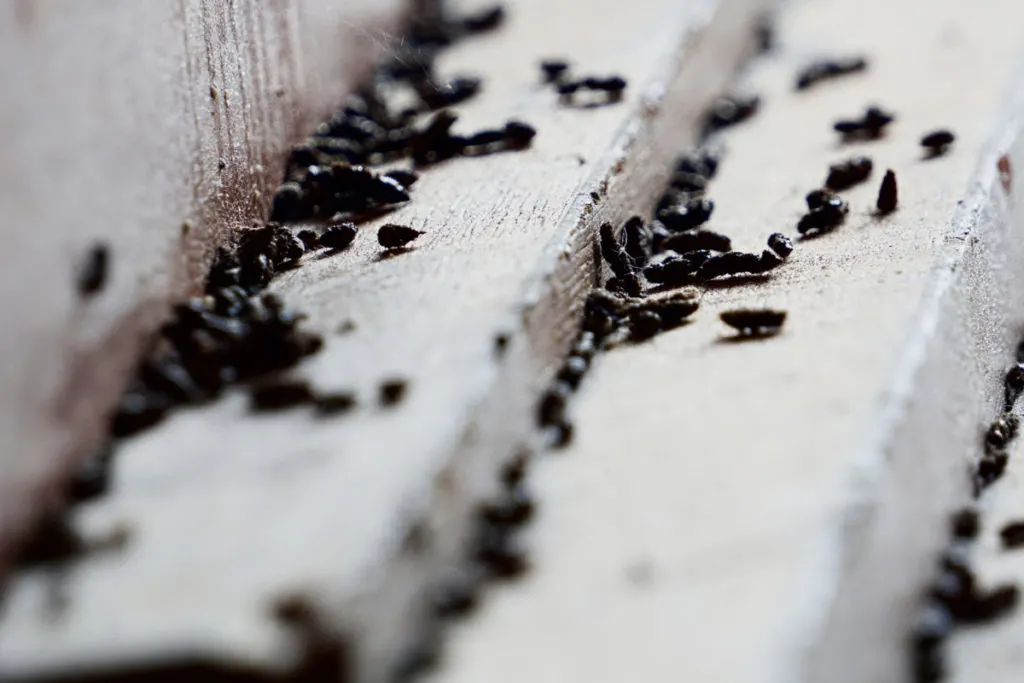
Do you have mice in your home? Here are some of the most common signs of an infestation.
- Teeth or scratch marks around food packages or on floor trim
- Traces of crumbs and other debris in unusual places, like high on a pantry shelf or in the middle of the floor
- Small, ovular pellets (mouse droppings) found under appliances or on countertops.
- Evidence of nests made from soft, shredded materials such as fabric, scrap paper, pet hair, string, and other household products
- Subtle scratching noises at night.
- Odd behavior from your pets, such as a fixation on certain appliances or barking at the wall.
5 Strategies to Get Rid of Mice in the House
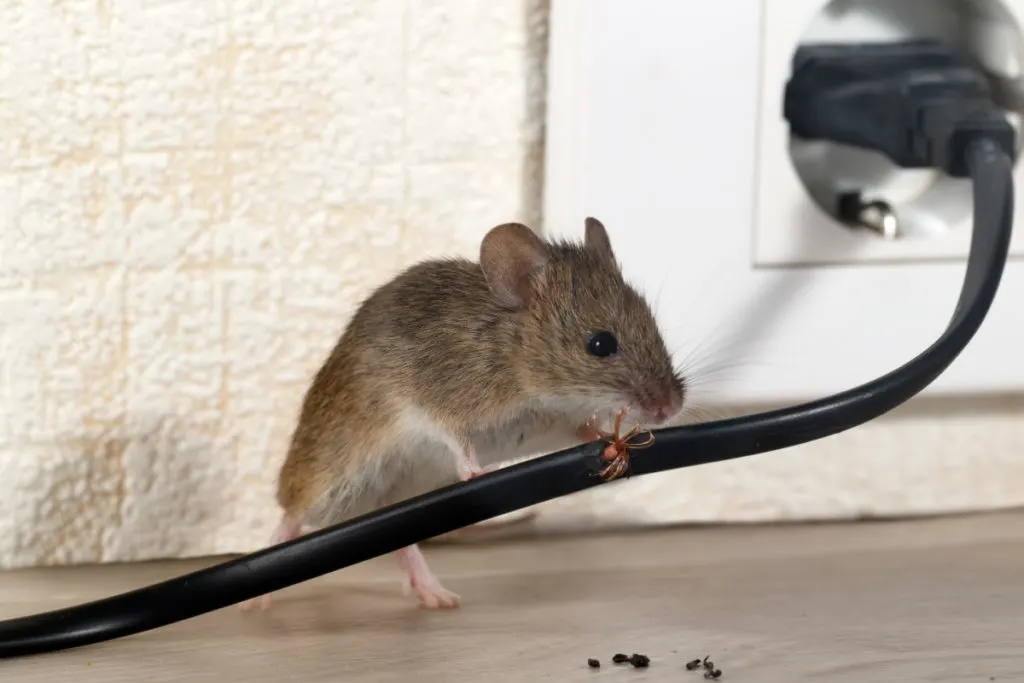
Act as soon as you see signs of mice in your home. Waiting gives the rodents more opportunity to establish themselves and makes them that much harder to eradicate. Here are the steps to get ahead of the problem.
1. Find Their Entry Point
Your first step for eradication is to determine how the mice are initially getting indoors. This will take some detective work, as mice can squeeze through holes the size of a dime.
Carefully inspect your walls, especially at floor height, for any overlooked holes. Make sure you move furniture around to see what holes are hidden away.
2. Remove Any Nesting Materials
Next, it’s necessary to make your home less hospitable by securing as much potential nesting material as possible. This can include paper scraps, blankets, cardboard, fabric, toilet paper, and more. Keep as much of this material in heavy-duty plastic bins as is practical to minimize access.
3. Set Up Mouse Traps

Now it’s time to actively pursue the mice already in your home by setting traps. There are several styles to choose from, ranging in cost, method, effectiveness, and potential risk factors for the rest of the household.
Here are some to consider:
Snap Traps:
As the most common mousetrap used today, snap traps employ a quick trigger that efficiently kills mice lured close by the bait. Different types are available, including bar, clam, and hidden kill.
One benefit of these traps is that the deceased mouse stays in the trap, so you don’t have to worry about tracking them down in hidden corners of your home later. However, many people would prefer not to deal with the traps after they’ve been successfully deployed.
Note: If you’re willing to clean and reset them, most snap traps are reusable.
Electric Traps:
These traps work by luring mice into chambers where they receive fatal levels of electric shocks. Some models, like the Victor M250S, boast a 100% kill rate and will work on up to 100 mice on one set of batteries. All electric traps are designed to be safe for pets and children.
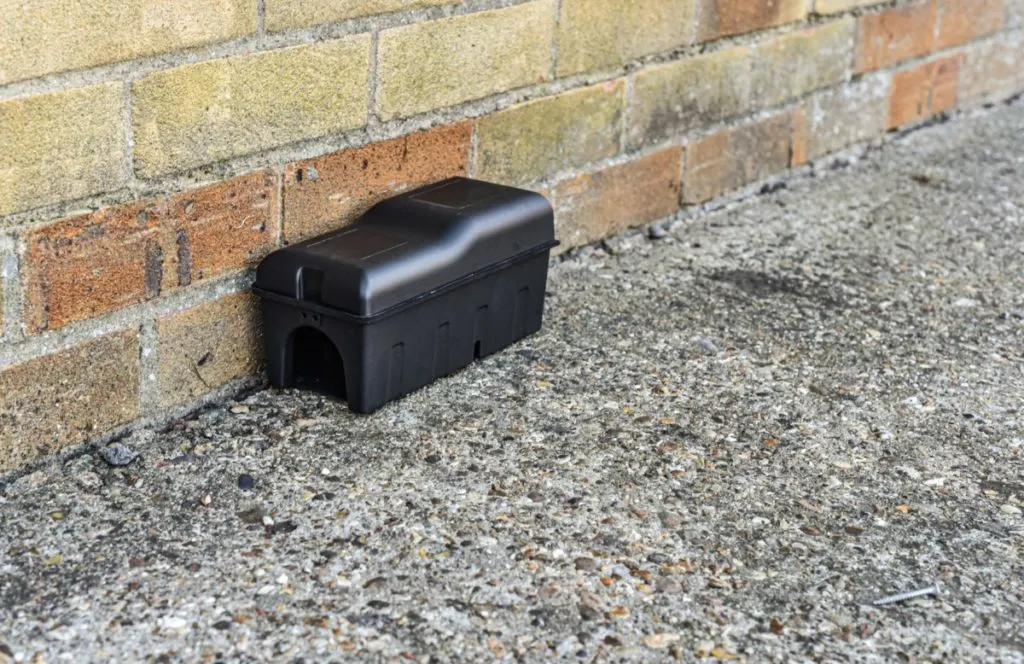
Sticky Traps:
This low-tech option works as you’d expect—mice get stuck on an adhesive glue board and stay that way until you deal with them. While cheap, these traps can only be used once and leave you with a live mouse to either release or otherwise dispose of.
Poison Bait Stations:
This controversial bait method involves sealed packets of poison designed to appeal to mice. When they nibble through the packaging, they become poisoned and eventually die. The problems with this method are twofold: first, the mice don’t die at the site of the trap, making it possible they could expire within the walls of your home and be lost to you. Likewise, pets might also nibble on the bait and experience gastrointestinal issues.
Repellents:
Deter mice from your space with sprays or scent pouches designed to keep them away. This humane treatment won’t kill the mice, but it needs to be reapplied regularly to maintain effectiveness. Plus, most aren’t strong enough to keep out the most persistent mice.
Live Catch Traps:
These humane mouse traps contain chambers with trigger-activated doors. They are designed to catch mice and won’t reopen until you choose to release them. This lets you bring the mice outdoors rather than ending their lives altogether.
Note that it’s recommended you release them over a mile from your home; otherwise, the savvy rodents are likely to return.
Ultrasonic Trap:
Similar to other forms of mice repellents, ultrasonic repellers use high-frequency waves to irritate the rodents’ nervous systems and keep them away from your home. Most traps will also work against cockroaches and other insects.
What Should I Do with Live Trapped Mice?
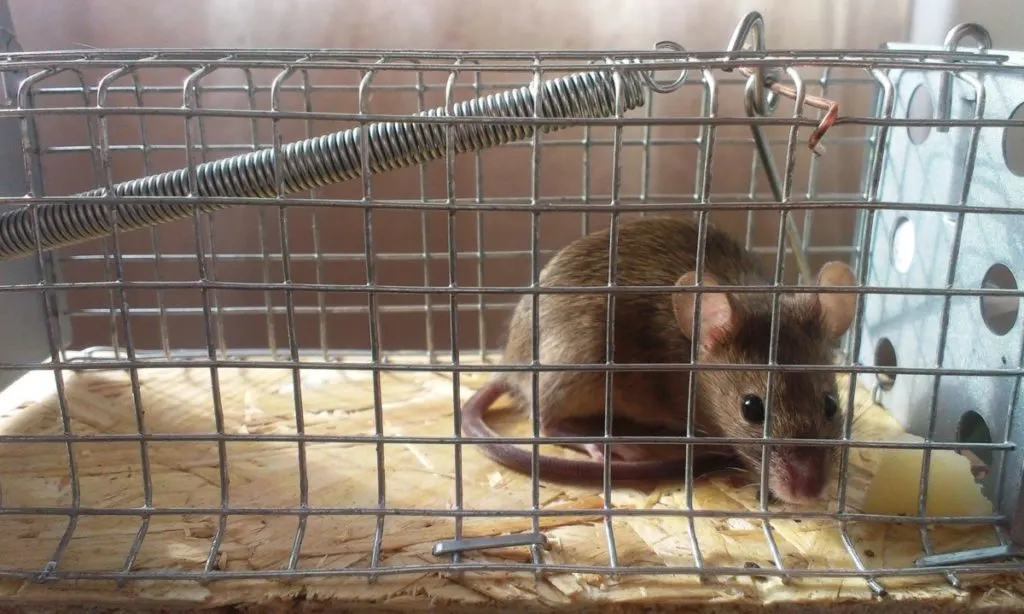
Many forms of humane mouse traps will leave you with a live rodent in the end. The best thing to do is put the entire trap in a heavy-duty plastic bag and take it to a natural location at least a mile from home before freeing them.
Distance is essential, as house mice aren’t naturally suited to outdoor life and will quickly seek any available shelter. If they can’t find it, the released mice often become easy prey for hawks and foxes.
That’s something to consider when weighing the benefits of using “humane” traps in the first place—though you can feel good about feeding the local predator populations.
How To Dispose of Dead Mice
Dead mice are simple to dispose of. Simply protect your hands before grabbing the trap and toss the body into your trash. Don’t flush them down the toilet, and refrain from adding them to your compost pile because of disease potential. Thoroughly wash your hands after dealing with them.
4. Get a Cat
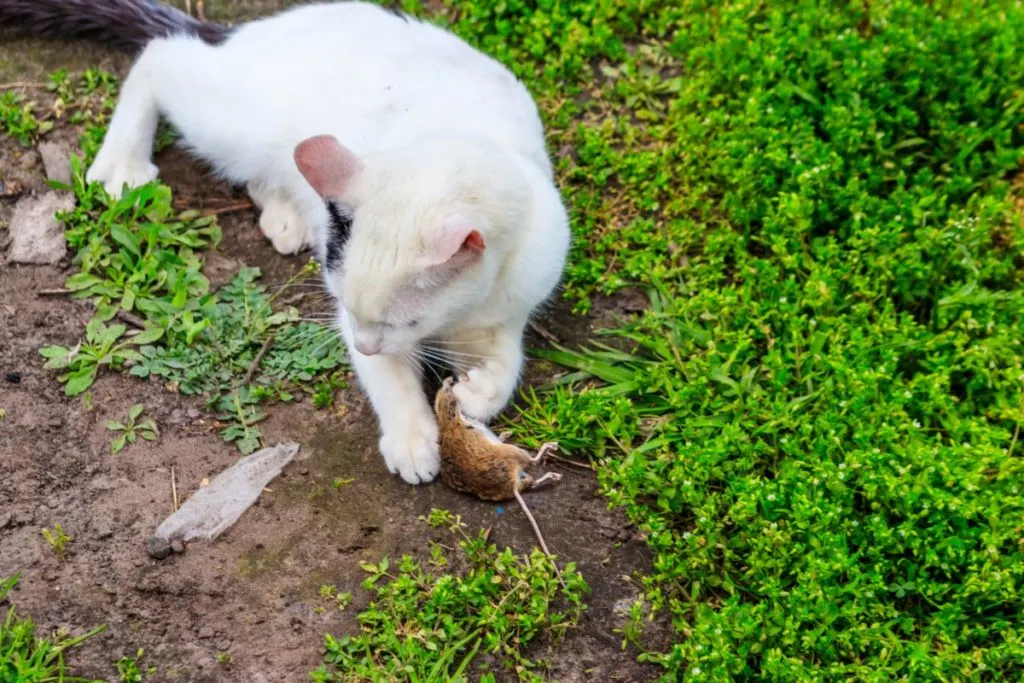
The cliché is true—cats are excellent mousers. Not only are these tiny rodents scared of their scent, but cats are natural predators for mice that love nothing more than hunting them down. If your household can support a cat, they offer some of the best mice protection available.
If a cat doesn’t fit your lifestyle, consider confusing mice with ammonia. Soak some into cotton balls, and the urine-like scent will convince them a predator is lurking just out of sight.
5. Call an Exterminator
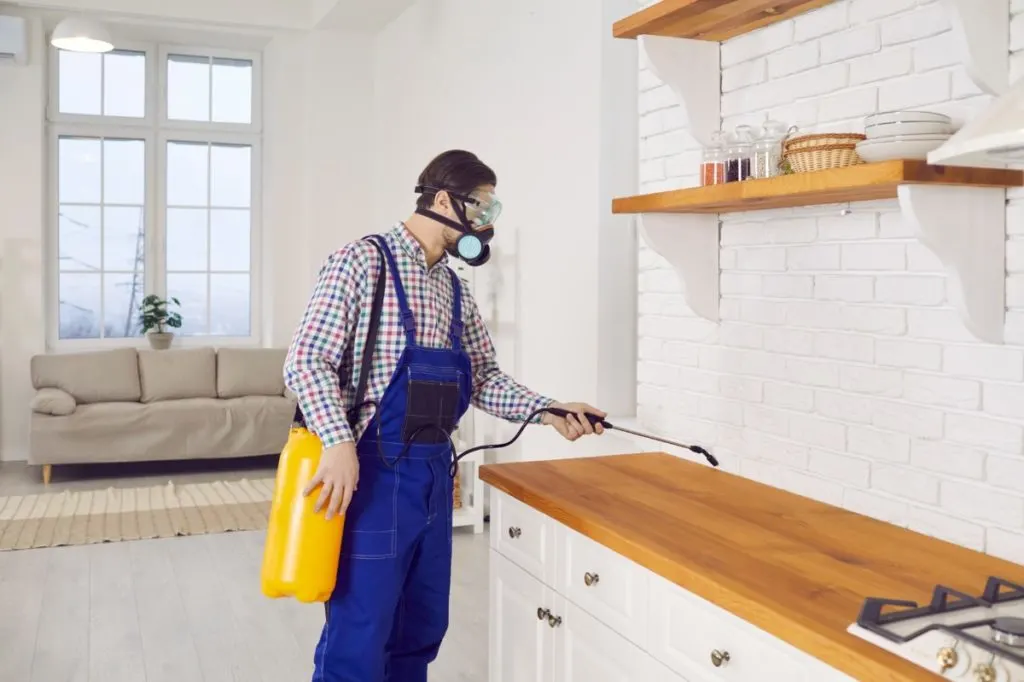
So long as you don’t do anything in your home to attract more mice, the results of the extermination should last for a long time.
When all else fails, you may need to bring in a professional. Do research to find someone who is accredited and well-reviewed in your region.
Rodent exterminators will quickly hone into the cause of the problem and efficiently eliminate the mice. In some cases, this may require you to leave your home until the extermination is complete.
8 Mice Removal Myths That Don’t Work
Not all mouse removal strategies will work as promised. Here’s a quick look at some of the most prevalent myths and why they aren’t as effective as promised.
Dryer Sheets:
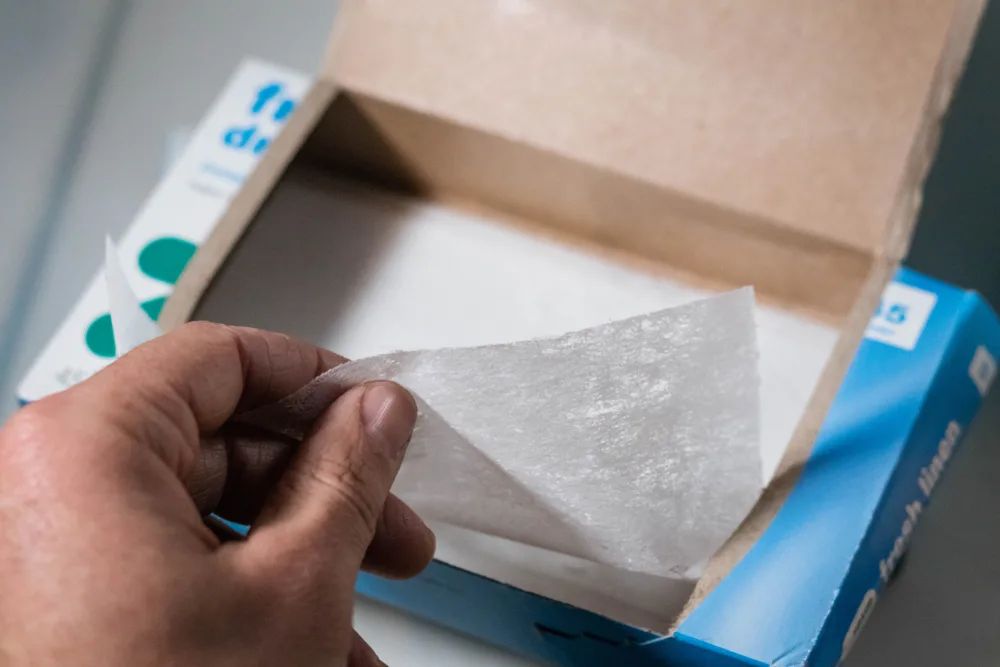
While the intense fragrance of dryer sheets can keep mice away in the short term, the scent tends to dissipate quickly, and rodents can get over their aversion. Worse yet, leaving the sheets around your space may only succeed in giving them easy access to nesting materials.
Bright Colors:
Some say that painting your rooms or baseboards bright colors will overwhelm mice and keep them away. In truth, mice are colorblind and couldn’t care less about the colors in your space.
Peppermint Oil:

Widely used as a non-toxic mouse repellent, peppermint oil offers only a short-term solution. The oil will quickly dissipate, so unless you’re spraying it continuously, the mice will tolerate the temporary inconvenience.
Antifreeze:
While leaving shallow dishes of antifreeze around your home offers a sweet but deadly temptation to mice, there’s a high risk that pets or children might accidentally ingest it. So, while this method is effective, it should only be used with extreme caution.
Mothballs:
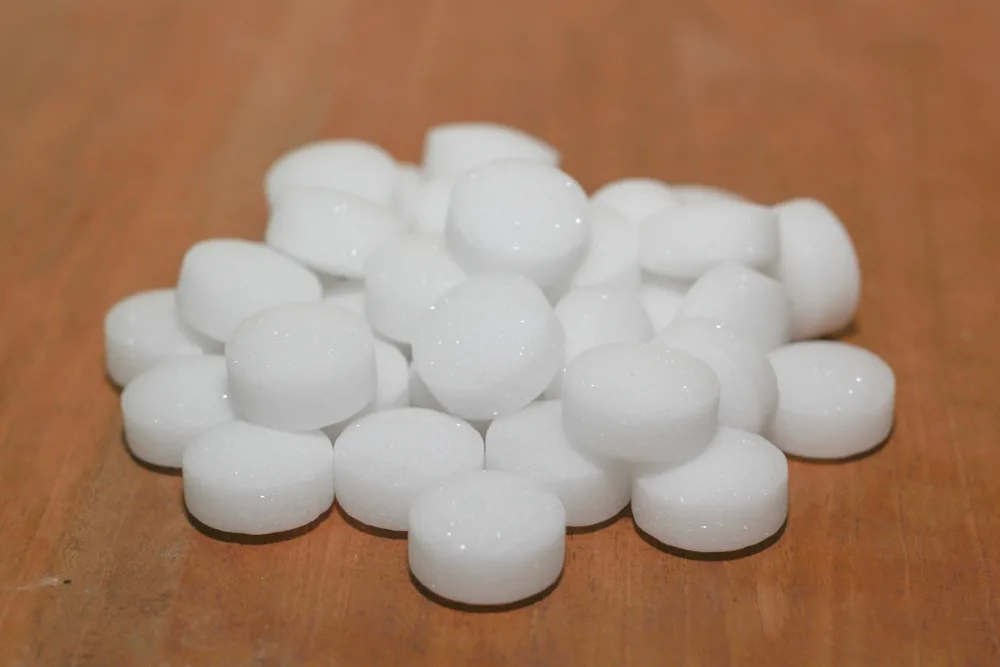
Mothballs contain trace amounts of naphthalene, which acts as a rodent deterrent. However, the balls themselves don’t have a high enough concentration to keep them away unless you filled your space to the point the scent was overwhelming.
Bleach:
While bleach will technically kill mice if consumed, the risks of using it as bait outweigh the benefits. Bleach is toxic for anyone who ingests it, and it can damage your home if spilled.
Irish Soap:
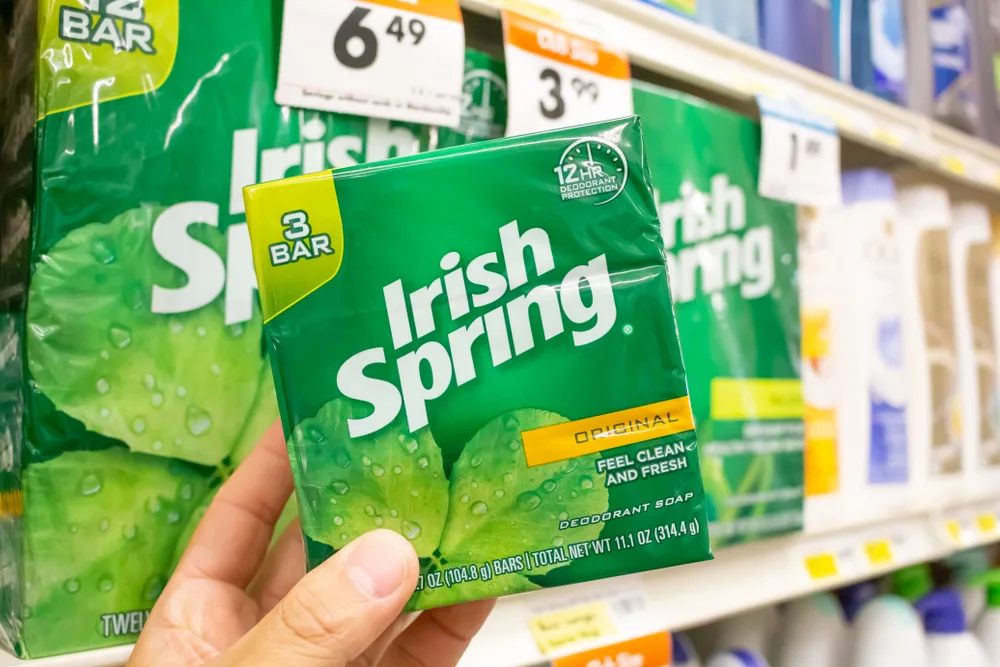
Cheap and easy to use, it would be ideal if Irish Soap bars really kept mice away. The idea is that rodents are attracted to the soap’s animal fats and will take a bite, consequently dying from chemical poisoning. However, mice would need to eat massive amounts of soap for it to have an impact, which rarely happens.
How To Keep Mice Out of Your Home in the First Place
If you don’t yet have a mouse infestation, the odds are good you want to keep it that way. Here’s what you can do to ensure your home isn’t an attractive place for mice to make their own.
Clear Out the Garage

Your garage creates the perfect in-between space for mice. It’s likely warmer than outdoors and just cluttered enough to give them space to burrow in without detection. Under the hood of your car is a common nesting spot, and mice that settle in can quickly cause serious damage by chewing on wires.
It’s smart to keep mouse traps set out in your garage and to clean up any fabric or cardboard scraps that make appealing nesting materials.
Seal Your Home with Caulk and Steel Wool
Make it a challenge for mice to get indoors by sealing the exterior of your home. It takes little time for rodents to gnaw even tiny holes large enough to fit their bodies, meaning you can’t overlook the smallest spaces.
Do a thorough inspection, especially along your basement foundation and the spaces where pipes enter your home. Plug any holes with caulk, wire mesh, steel wool, or weather stripping to keep them stymied.
Turn on Bright Lights
While mice don’t care much about color, these naturally nocturnal animals feel uncomfortable in bright lighting. Keep your lights on to deter them from settling in. Some exterminators even recommend strobe lights set on a timer to go off at night to keep them on edge. It’s also possible to buy specialized strobe lights for cars to keep the vermin out of the hood.
Space Out Your Bird Feeders

Much as you may enjoy attracting birds to the backyard, that seed mixture is just as tempting for house mice. Keep the feeders far from the ground and away from your house to avoid luring in mice.
It might also be wise to invest in squirrel-proof feeders to limit the amount of seed that gets scattered on the ground.
Prune Foliage Near the House
House mice may love the indoors, but they also feel comfortable in the shrubbery around your home. Thick hedges make for a convenient nesting space and ease the transition to squeezing in your home. Make the backyard less appealing by cutting back shrubbery and keeping stacks of firewood at least twenty feet from the home.
Take Away the Food Supply
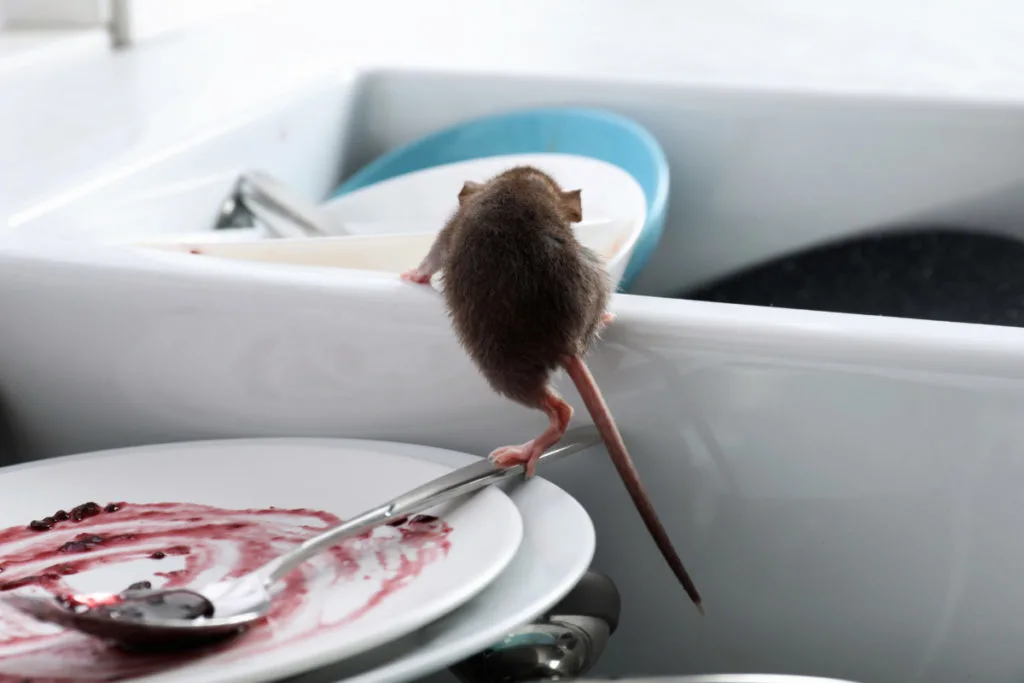
Colder weather brings mice indoors in a relentless search for food. Make it hard to access by cleaning the kitchen every evening—no dirty dishes or crumb-filled countertops.
It’s also smart to store cereal and crackers in airtight plastic containers to prevent pests from munching through the cardboard. Pet food is often overlooked as a mouse attractant, so keep yours out of reach of little nibblers.
Protect Garbage Cans
Your trash is a rodent’s treasure, so keep it inaccessible to deter mice from moving in. This may involve investing in a can with a tightly sealed lid and keeping the trash far away from your home. A cheap solution is to bungee cord the lid or weigh it down with rocks or bricks.
Inspect the can regularly for any holes or signs of gnawing so you can thwart mice before they move in.
Install Gutter Guards
Your home’s gutters provide a mode of easy transportation for mice. Keep them inaccessible with a gutter guard. As a bonus, it will also streamline the fall leaf removal process by keeping your gutters clean.
Add Screens
Mice may sneak into your home through vents, chimneys, and other gaps. You can thwart them easily with a metal mesh screen secured over the opening. Note: avoid plastic, as mice will chew through it in short order.
Get Rid of Mice Fast to Avoid Future Problems
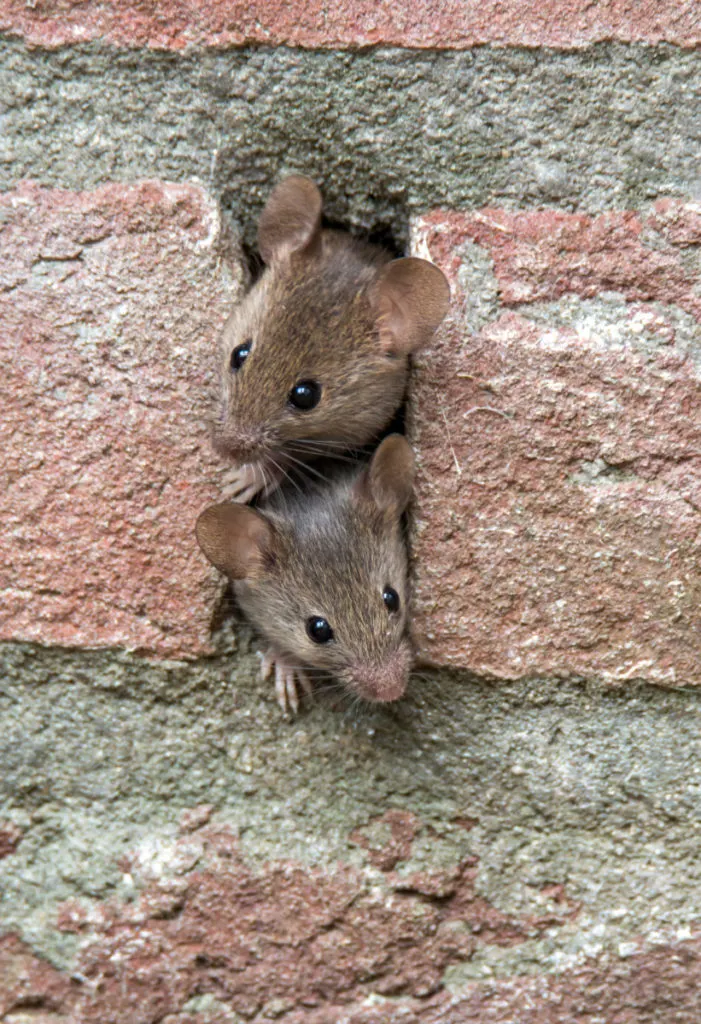
Finding signs of mice in your home can fill you with panic.
First off—it’s not a sign you are unhygienic or a poor housekeeper. These sly rodents will take advantage of the slightest opportunity to move in. However, the problem can quickly grow (literally) out of control if you don’t take immediate action.
Follow this action plan to keep mice out of your home and mouse-proof your home, and you’ll be able to rest easier knowing you have a home free of rodents this winter.
More Pest Control Articles:
How to Get Rid of Stink Bugs & Ladybugs in Your Home
16 Natural and Easy Ways to Keep Spiders Out of Your Home
11 Ways To Keep Deer Out Of Your Garden (+ Dad’s Foolproof Solution)

Get the famous Rural Sprout newsletter delivered to your inbox.
Including Sunday musings from our editor, Tracey, as well as “What’s Up Wednesday” our roundup of what’s in season and new article updates and alerts.

